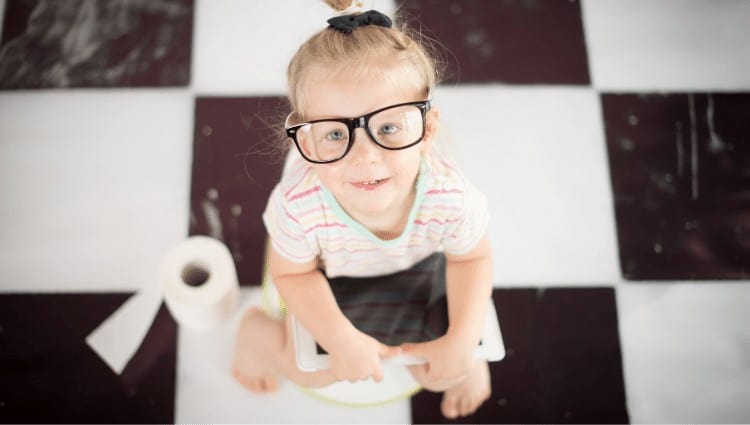
Potty Training Methods - Table of Contents
If you are reading this post, it means you feel you and your child are ready to take a step towards a diaper-free life. Being diaper-free is definitely going to save you BIG!
I am sure you have seen signs of readiness from your child; however, you are wondering how to begin the process of potty training your child.
We have a detailed step by step guide, do and don’ts, etc. about potty training in the article ‘Potty training Boys,’ and in this article, we will elaborate on the various potty training methods you can choose from to potty train your child.
We have carefully evaluated and elaborated 10 best potty training methods below for you to choose from. We have used a few of these methods to potty train our daughter and triplets (all boys). You could follow one potty training method or a combination of a few approaches or just invent something of your own based on any of the potty training methods listed below.
TIPS to select the right potty training method
- Before you select from the list of below mentioned potty training methods, look out for readiness signs from your child.
- Understand the amount of time you have so that you can organize yourself and child accordingly for training. This is one of the most important factors after the readiness of your child.
- Understand your child personality type. Is your child wooed by stories more, has their own way of doing things, or is more the reward oriented. All this is important for you to finally narrow down on which technique to select from this list of potty training methods.
- Next thing which is very important is how easily the chosen method blends into your everyday life. You and your family need to be comfortably adjusted to the potty training method you choose, else it will end in a disaster.
- Further, while choosing the right method, decide ahead of time what words you will be using to address ‘Potty’ and ‘Pee.’ Keep in mind that others have to be comfortable and familiar with the words as well. Ensure everyone uses the same terminology, especially if you decide the words to be in your native language.
- You can select combination of potty training methods for different scenarios. I have tried it myself and it works well. I have explained it in detail below.
- Whichever potty training methods you select, refrain from using negative connotations like ‘Stinky Poo,’ ‘Dirty,’ ‘Yucks’ etc. while addressing your child’s bowel movements in front of them. Kids understand negativity and do not respond well to it.
10 Best potty training methods
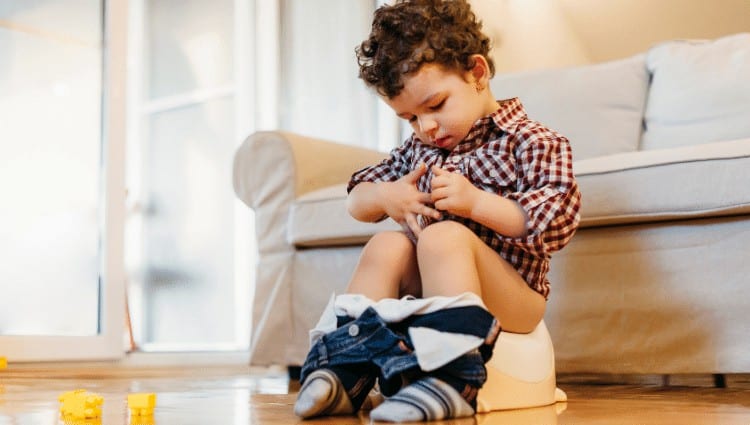
1) Child-oriented potty training method
First introduced by the famous pediatrician, Dr. T. Berry Brazelton, amongst all other potty training methods discussed in this article this is one is far more successful for toddlers and is supported by the American Academy of Pediatrics (AAP).
This potty training method emphasizes a lot on the readiness of the child for potty training.
In this method, parents allow their child to take the initiative for trips to the bathroom, and frequently continue using diapers or pull-up training pants with this method until the child starts going to the bathroom before doing so in the diaper.
Suitable for children between 2-3 years of age, preferably 3 years, when the child starts communicating with you and is able to express their need to go to a toilet or a bathroom.
Child-oriented potty training method—Process
- You will need to initiate conversations and discussions on potty training to encourage your child to use the toilet or the bathroom. However, you do not need to make too many extensive efforts to push the child to be potty trained.
- Always watch out for your child’s natural instincts and interests and continue to encourage them to act on their own instincts.
- You can also be a model and pretend to use the toilet for your kid and get them to mimic you.
- You should let your child take the lead in taking trips to the bathroom while they continue to wear a diaper or pull-up training pants until the time your child starts going to the toilet before wetting or soiling their diapers.
Child-oriented potty training method—Pros & Cons:
Pros:
- Does not require a parent to set aside dedicated time for this task or apply focus entirely on this task.
- This method involves less regression & resistance from the child as it is initiated by the child.
Cons:
- This method does not yields quick or immediate results, as it’s based on the child’s readiness and you know a child’s mind is constantly wavering and easily distracted.
- You may have to continue to pay for diapers for an extended time unlike the other potty training methods.
2) Training pants potty training method
For any mother this counts as a major shopping milestone. The training pants method is a really interesting and effective potty training method.
However, an insider tip—shop for training pants which are liquid absorbent to start with, so that you have a safety cushion in case of any accidents.
You can also refer to a few tips, dos & don’ts especially to potty train boys.
You can encourage your child to use the bathroom by making them wear their favorite character training pants.
From the list of potty training methods this method is more suitable for kids aged 4 years and above who are not yet potty trained. A 4-year-old kid, is more intelligent and can communicate well.
Training Pants Potty Training method—Process:
- Firstly, shift directly from diapers and get your child to wear their training pants.
- Ensure that you take your child to the toilet regularly.
- Encourage your child to start communicating and telling you about going to the toilet. The faster they start telling you, your life will get easier.
- Even if your child wets or soils their pants, take them to the toilet to freshen them up. Make them sit on the potty seat to clean them to just get them comfortable with the potty seat more and more.
Training Pants Potty Training method—Pros & Cons:
Pros:
- The child starts understanding the sensation of peeing & pooping, when they wet their pants.
- They get inclined to use the toilet sooner to avoid wetting themselves.
Cons:
- Be prepared for soiled areas in your house. Expect them to pee or poop anywhere and everywhere till they get used to the feeling so as to inform you beforehand about the same.
- Remember you cannot shout or scold your kids, as this could discourage them from using the toilet altogether.
3) Three-day potty training method
In today’s day and age, parents do not have time to follow-up on potty training of their child for a whole year or even more.
Many a psychologists have said that amongst all potty training methods this one is really effective.
Suitable for parents who wish to potty train their children promptly. The best time to initiate this process is when your child is around 22 months old.
Three-Day Potty training method—Process:
- This method is a fast-forward way of potty training the child.
- All diapers are thrown out on the first day itself. Children are then made to wear just a T-shirt and big boy underwear.
- During this time, do stock up on extra pairs of underwear as this process involves putting kids on a liquid diet to encourage peeing.
- Parents educate their children about the toilet and instruct them to let them know when they need to go to the bathroom, so that they can keep their new underwear dry.
- As the process progresses stay calm, praise your child heavily, and use accidents (there are going to be loads, so be prepared for the worst) as steps to teach your child what they need to do to get it right.
Three-Day Potty training method—Pros & Cons:
Pros:
- Very quick & swift training method.
- You can utilize your diaper budget for other things much earlier than expected.
Cons:
- As the method is quick, it needs significant amount of your time for those potty training days as you need to completely focus on getting your child potty trained in a short while.
- You should be prepared for accidents because of the fast-paced nature of this potty training method.
4) Infant potty training method/elimination communication method
This method is sometimes also referred to as ‘Natural Infant Hygiene Method.’ Amongst all the potty training methods mentioned in this article this method is more popular in Asian and African families.
Suitable for a child who is a month old, and the training will be completed when the baby starts to walk.
Infant Potty training method—Process:
- In this method, you may need to start by avoiding diapers completely from the beginning.
- This early on diaper-free experience helps children identify being dry and wet. By their instinct, they start crying when they are wet, cold, and uneasy.
- Parents can use a diaper at night for some time.
- Parent have to work based on their baby’s indications and understand when their child is about to poop or pee.
- These signals can be based on time, pattern (with respect to eating or sleeping), words (sounds/grunts), or just pure intuition. However, the parent or the caregiver has to be vigilant and notice these signs to rush them to the bathroom or clean them—based on the child’s age and rate of movement permissible for the child during that age.
Infant Potty training method—Pros & Cons:
Pros
- Plus side is you SAVE BIG on diapers.
- Your baby’s tushy is saved from getting those pesky diaper rashes altogether.
- You and your baby will be more attached, as you will understand the subtle nuances, grunts, etc., and what they mean for your baby earlier on.
Cons
- The amount of time and dedication required in this method is quite substantial; hence, it’s may not be possible for all families.
- This method also needs a set of constant caregivers and will not work if the caregivers change frequently.
- A lot of signals are based on time, pattern, words (grunts), gestures etc., which are sometimes very subtle and the caregivers have to be very vigilant to observe these signs and act accordingly.
5) Parent-led potty training method
If you are like Monica Gellar (from F.R.E.N.D.S.) or even Danny Tanner (from Full house), then this is your kind of potty training method.
Suitable for parents who can adopt and adhere to schedules and organize accordingly. Stickler, in a way, for schedules.
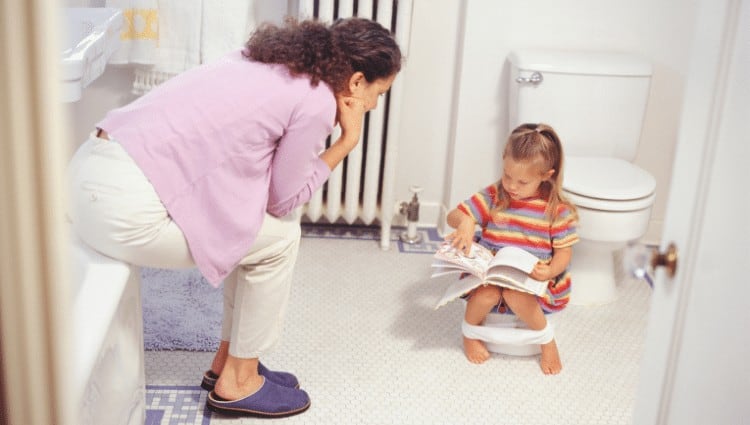
Parent-led potty training method—Process:
- Unlike other potty training methods, this one needs the parent (or caregivers) to take the child to the toilet either on a set schedule or based on:
- Certain time intervals say may be every 2–3 hours or
- Encourage the child to use the toilet after meals, in between activities, and even before sleeping.
- There are many variations of parent-led potty training based on the schedule you create. It is as per you and your child’s convenience.
- The important point is to FOLLOW THE SCHEDULE, and you will not go wrong with this method.
Parent-led potty training method—Pros & Cons:
Pros
- This method is easier to follow when there are multiple caregivers.
- Schedules make it very easy for any caregiver to adopt & follow.
- Parents, especially the mother, can have their “me” time with this method, as they can organize and schedule things to give themselves a break too.
- No need to change the baby’s schedule, in case there are any changes in the caregiver’s schedule or even changes of caregivers entirely.
Cons
- As this method is more schedule oriented, the child can take a longer time to ascertain and recognize their natural body signs of the nature’s call.
- Strict adherence to schedule is needed, otherwise this method may not work the way it should.
6) Wait-and-pee/wait-and-poop potty training method
This is a more comfortable way of potty training as you will be following a schedule. In this method, the child is made to use pull-up nappies/diapers while being potty trained.
Amongst potty training methods this one is suitable for children who have progressed to pull-up diapers/nappies but have not yet been potty trained, and for parents who don’t have too much of time for mess, cleaning up, accidents, etc., that happen during potty training.
Wait-and-pee/wait-and-poop method—Process:
- While your child progresses to pull-up diapers/nappies, train them to pull their diaper/nappy up and down for practice in the beginning.
- Slowly get them to sit on the pot after waking up, before a nap, before and after meals, and before bedtime.
- Sometimes you may find that the pot remains empty as your child is genuinely not willing to pee or poop. However, ensure that you still finish with a flush for your child to get familiar with what follows.
- Slowly follow this routine religiously, and before you know it, your child will pick it up as a habit and progress into getting completely potty trained.
Wait-and-pee/wait-and-poop method—Pros & Cons:
Pros
- Fewer odds of accidents as your child is still in nappies.
- Your child will gradually learn to understand the patterns and signs of going to pee or poop.
Cons
- Children may not be willing to sit on the pot at all, as they are comfortable in their nappy.
- They might not be able to understand the subtle signs of pee and poop with the nappy being on still. This will hamper their potty training progress.
7) Potty planner – Potty training method (nappy on & off potty training method)
This method, like the child-oriented potty training method, allows the child to lead and takes the child’s readiness into consideration while potty training the child.
Suitable for children who need to be substantially prepped for any task altogether.
Potty Planner-potty training method—Process:
- In the beginning introduce the idea of using the potty seat through stories, books, videos, etc.
- For the child’s convenience, you can set up his small potty seat near the bathroom or inside, or even in the living room to begin with.
- The idea is to get your child used to sitting at a special different place while they empty their bladder and bowel.
- During the initial few days, your child may sit on the pot but do nothing. However, with continuous efforts, your child will gradually start responding in the way you tell your stories and videos you showed.
- Once the child has gotten used to peeing or pooping in the small pot, you can make them take the next step of sitting on the toilet seat.
Potty Planner-potty training method—Pros & Cons:
Pros
- Training becomes easy if your child is ready.
- Some kids show an affinity to a casual approach rather than a very rigid one and can effectively get potty trained early on.
Cons
- High dependency on child readiness could delay/lengthen the potty training process.
- Time dedicated by parents for prepping and then monitoring the child if they are actually taking steps to get potty trained is substantial.
8) Eyes on the prize potty training method
As the name suggests, it is a very reward-oriented approach. Basically, in this method you entice your little one to use the toilet by giving them a reward every time they use the toilet.
Amongst all other potty training methods this method is especially suitable for children who love to work towards a goal or earn a prize/reward for something they have done as instructed. It is also suitable for a child that understands this give and take relation.
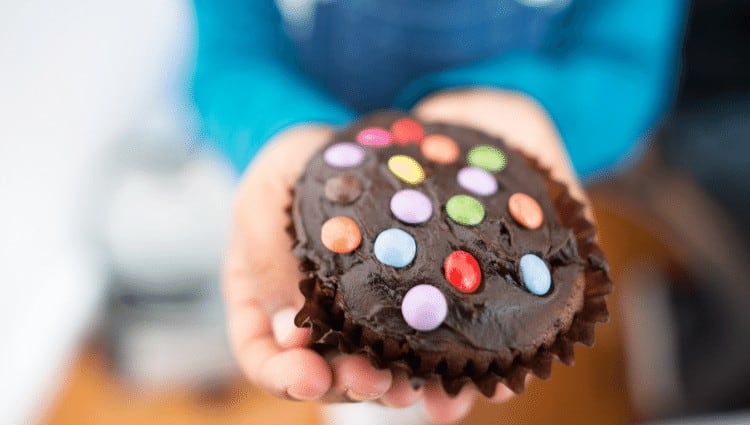
Eyes on the prize potty training method—Process:
- Decide on the combination of rewards that will entice your child to go to the toilet every time during a day. They could be as follows or a combination of them:
- Chocolates
- Reward stars (potty chart)
- Small toys
- Stickers
- Screen time of their favorite program
- An extra story at bedtime
- Cookies
- More play time and so on…
- You could decide to reward them every time they visit the bathroom or once at the end of the day. You decide what best motivates your child.
- Have a reward chart on the bathroom door and make them excited enough to maintain it along with you.
- Keep the excitement flowing on a continuous basis till they are fully potty trained.
Eyes on the Prize potty training method—Pros & Cons:
Pros
- It is a low stress approach. Use the toilet get the reward.
- Simple to follow for kids who understand the rewards mechanism.
Cons
- The reward could become a habit and can be a nuisance in itself and difficult to get weaned.
- Unlike other potty training methods here the focus could get completely shifted from doing the potty right to getting a reward. Sometimes kids do it halfheartedly and then are adamant to get the reward.
9) Bare-bottom potty training method
This method is considered very effective in potty training girls and is very easy for a child to adapt and learn amongst all other potty training methods.
Suitable for girls and boys over 2.5 years of age.
Bare bottom potty training method—Process:
- Always try this method during the summers.
- To start with, let your child roam naked during summer days.
- Then encourage them to drink a lot of water.
- Pay attention and look for signs in your child to understand when they wish to pee or poop.
- Then rush them to their potty seat and make them sit.
- Repeat this process. Make them understand this process by communicating with them.
- Slowly and steadily the child will start realizing when they want to pee or poop and start using the potty seat.
Bare bottom potty training method—Pros & Cons:
Pros
- Inexpensive as you do not need to spend on diapers.
Cons
- Parents that don’t like their child remaining naked for long durations may not like this method.
10) Combination potty training methods
Many parents like you and me like to start off on a method and later feel that their child is responding favorably to another method.
In such scenarios, you can use any kind of a combination approach/potty training method that suits you and your child’s needs.
For example, you are following the child-oriented approach and sometimes to entice your child you introduce rewards (not making rewards a habit).
OR
You are using the bare-bottom method, but your child also wears a pull-up diaper/nappy when outside the house. Here you are potty training him bare bottomed as well as preparing for those outdoor days by nappy up and down potty training.
I remember that I started with infant potty training method, followed by nappy on and off method when we were travelling, and then I followed the child-oriented approach. All these potty training methods were utilized from time to time.
However, you need to be very clear what combination you would like to go with and what age are you introducing the potty training method. Else the child could end up all confused making potty training an unnecessary, prolonged process.
Combination potty training method—Pros & Cons:
Pros:
- You could choose specific points from 2- 3 different methods which suit your family and lifestyle.
- It is comfortable and customizable, as its catered to suit you and your baby’s requirements
Cons:
- You need to maintain consistency with the steps you have created for yourself. Frequent deviations could confuse your child and hinder any progress made.
Key takeaway
Potty training a child is one of the important milestones; hence, from the above list of potty training methods you select the one which best suits you, your child, and your family.
Potty training is a process and cannot happen overnight. The key is to be patient with your child, cheer and praise your child whenever they use the bathroom, and be consistent with the method you choose to potty train them. The Mantra is—Patient, Cheer, Praise, & Consistent—P2C2.
Remember that there are going to be accidents no matter which potty training method you adopt. Be prepared for the occasional pooplosions (Yikes!!).
All of the above will surely help in reducing your stress, while implementing the one from the potty training methods mentioned above.
The idle age to potty train your child is from the time they start showing signs of readiness and start communicating with you through gestures, grunts etc. i.e. between ages 18–24 months. Sometimes, you may find your child is not ready to be potty trained till they are 3 years. In such scenarios, do not fuss or push your child too hard. They could take adversely and may stop responding to your efforts if pushed too strongly.
You need to stay calm and keep encouraging your child to do better. Praise them. Praises go a long way.
Remember the Mantra is—Patient, Cheer, Praise, & Consistent—P2C2.
Hope this article elaborating on various potty training methods is useful to you. So let us know if you need further help on anything. Feel free to get in touch with us.
In case you have used a potty training method and it has worked for you, do share and comment, we would love to know.
Happy Potty Training!
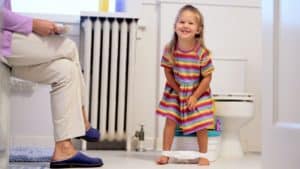

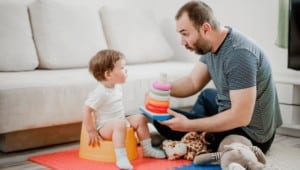


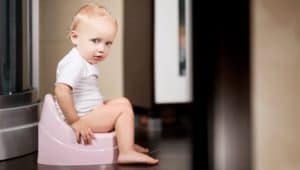




Hello there, I found your website via Google while looking for a related topic, your web site came up, it looks great. I have bookmarked it in my google bookmarks.
Thanks for the tips. I hope one of these methods work on my 3 year old 🙂
It’s a pity you don’t have a donate button! I’d definitely donate to this outstanding blog! I suppose for now i’ll settle for book-marking and adding your RSS feed to my Google account. I look forward to brand new updates and will talk about this blog with my Facebook group. Chat soon!